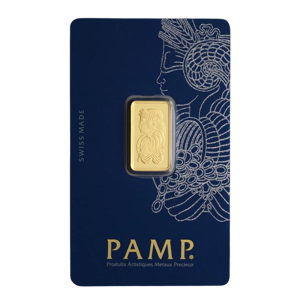Tavex uses cookies to ensure website functionality and improve your user experience. Collecting data from cookies helps us provide the best experience for you, keeps your account secure and allows us to personalise advert content. You can find out more in our cookie policy.
Please select what cookies you allow us to use
Cookies are small files of letters and digits downloaded and saved on your computer or another device (for instance, a mobile phone, a tablet) and saved in your browser while you visit a website. They can be used to track the pages you visit on the website, save the information you enter or remember your preferences such as language settings as long as you’re browsing the website.
| Cookie name | Cookie description | Cookie duration |
|---|---|---|
| tavex_cookie_consent | Stores cookie consent options selected | 60 weeks |
| tavex_customer | Tavex customer ID | 30 days |
| wp-wpml_current_language | Stores selected language | 1 day |
| AWSALB | AWS ALB sticky session cookie | 6 days |
| AWSALBCORS | AWS ALB sticky session cookie | 6 days |
| NO_CACHE | Used to disable page caching | 1 day |
| PHPSESSID | Identifier for PHP session | Session |
| latest_news | Helps to keep notifications relevant by storing the latest news shown | 29 days |
| latest_news_flash | Helps to keep notifications relevant by storing the latest news shown | 29 days |
| tavex_recently_viewed_products | List of recently viewed products | 1 day |
| tavex_compare_amount | Number of items in product comparison view | 1 day |
| Cookie name | Cookie description | Cookie duration |
|---|---|---|
| chart-widget-tab-*-*-* | Remembers last chart options (i.e currency, time period, etc) | 29 days |
| archive_layout | Stores selected product layout on category pages | 1 day |
| Cookie name | Cookie description | Cookie duration |
|---|---|---|
| cartstack.com-* | Used for tracking abandoned shopping carts | 1 year |
| _omappvp | Used by OptinMonster for determining new vs. returning visitors. Expires in 11 years | 11 years |
| _omappvs | Used by OptinMonster for determining when a new visitor becomes a returning visitor | Session |
| om* | Used by OptinMonster to track interactions with campaigns | Persistent |
| Cookie name | Cookie description | Cookie duration |
|---|---|---|
| _ga | Used to distinguish users | 2 years |
| _gid | Used to distinguish users | 24 hours |
| _ga_* | Used to persist session state | 2 years |
| _gac_* | Contains campaign related information | 90 days |
| _gat_gtag_* | Used to throttle request rate | 1 minute |
| _fbc | Facebook advertisement cookie | 2 years |
| _fbp | Facebook cookie for distinguishing unique users | 2 years |
What Causes the Gold Price to Reach All-Time Highs?

Since the beginning of September, the price of gold has risen by 3.4%. Thus, its performance outperformed that of the S&P500 (+1.8%), the Nasdaq (+3.3%) or almost any other developed country stock index.
But what is the reason for this huge interest in gold lately? The price of gold has risen by almost 26% this year. This makes 2024 the fourth best-performing year in terms of gold price gains in the first nine months of any year since the gold standard was lifted in 1971.
Given that the top three spots come from the years of some of the worst economic conditions in the U.S. – the stagflation decade of 1970s – this year’s results so far speak volumes for the outlook for the U.S. economy.
Why is There So Much Demand for Gold?

To understand what is pushing the price of gold to record highs, we need to understand investor behaviour. More specifically, what is the balancing of the investment portfolio in terms of risk.
When building an investment portfolio, we should never focus all of our resources on a single asset
This exposes us to either high potential losses or very low returns. In most cases, investors combine several asset classes when building their portfolio through a strategy known as diversification.
More on the subject here: What are assets? Types, examples and tips
More on the subject here: What is hedging: Meanings and Strategies
To balance the risks associated with stocks or alternative investments such as cryptocurrencies, investors can choose between United States Treasuries and gold. The presence of only these two options is explained by their security.
Bonds or Gold?

Bonds have a specific interest rate that depends on what the interest rate is set by the central bank. Setting this interest rate by central banks is a way of manipulating the credit market so that the monetary authority can conduct its policy. When this happens, the credit market, on which a number of other markets depend, such as the housing market and the stock market, becomes distorted.
Over the past two years, bond yields have reached their highest levels in decades
This was due to central banks raising interest rates to tame inflation. As inflation rates continue to fall, several central banks around the world have begun to cut interest rates on their monetary policy.
Once interest rates are lowered, the value of current bonds increases relative to newly issued bonds because they have a higher interest rate. However, bond yields are currently well below the Fed rate. This is due to the inverse relationship between the price of a bond and its yield.
When there is more demand for high-yield bonds, their prices increase, but interest rates decrease. With markets 100% certain the Federal Reserve will cut interest rates this week, many investors feel they’ve already missed out on buying high-yield bonds. So they turn to gold.
Interest Rates and the Price of Gold

Historically, whenever the Federal Reserve has started a rate-cutting cycle over the past 50 years, the price of gold has risen by an average of 8% in the following year. Of course, other factors can play into this price increase – for example, the real interest rate, which is the difference between government bond yields and inflation, geopolitical conditions, economic growth, unemployment data, and so on.
What is important to consider is that whenever central banks – specifically the Federal Reserve – start cutting interest rates, the price of gold increases. This happens because investors are turning to gold instead of bonds to get higher returns while balancing their portfolio risk.
Key Takeaways
The rising price of gold can be attributed to a variety of factors, primarily driven by investor behaviour, economic conditions, and economic activity.
With central banks cutting interest rates and bond yields dropping in the financial market, gold has become an attractive alternative for investors looking to balance risk and secure higher returns in the long term.
The bottom line is that historical trends show that rate-cutting cycles often push the price of gold higher, and 2024 is no exception for the market price of gold. As economic uncertainties continue, gold remains a favored asset for those seeking stability and growth in their portfolios.


















